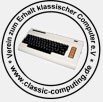Das (vorläufige) Ende einer langen Reise:
Ich habe den Floppy-Controller aus der P2-3A nochmals überprüft, es ist tatsächlich ein alter FD1771 verbaut. Testweise habe ich den gegen einen neueren Chip getauscht, aber MFM Disketten können trotzdem nicht gelesen werden. Es gibt also wenig überraschend noch weitere kleine Unterschiede auf der Controller-Platine.
Im Zuge dieser Tests habe ich auch gleich noch neue EPROMs in die CPU Platine meiner "Test-P2" eingebaut. Diese CPU Karte hat sehr unpraktische EPROM Sockel, die auf der Außenseite einen erhöhten Rand haben. Damit konnte ich meine Zwischenstecker nicht anbringen, weil sie zu breit sind und am Rand anstoßen. Ich habe die EPROMs also mit etwas Bastelei direkt in die Sockel auf der Platine gesteckt. Siehe da, nun läuft auch dieses System! Es meldet sich wie gewohnt das MOS und erlaubt die Befehlseingabe. Booten kann ich natürlich nicht, da ich in diesem System nun den alten FM-Floppy-Controller aus der P2-3A habe (und dafür fehlen mir Floppies bzw. passende Gotek Images). Mit dem derzeit verbauten neuen Floppy-EPROM (Version 42D) funktioniert der alte FM-Controller natürlich keinesfalls, dazu müsste wieder das alte 011er EPROM eingesetzt werden.

